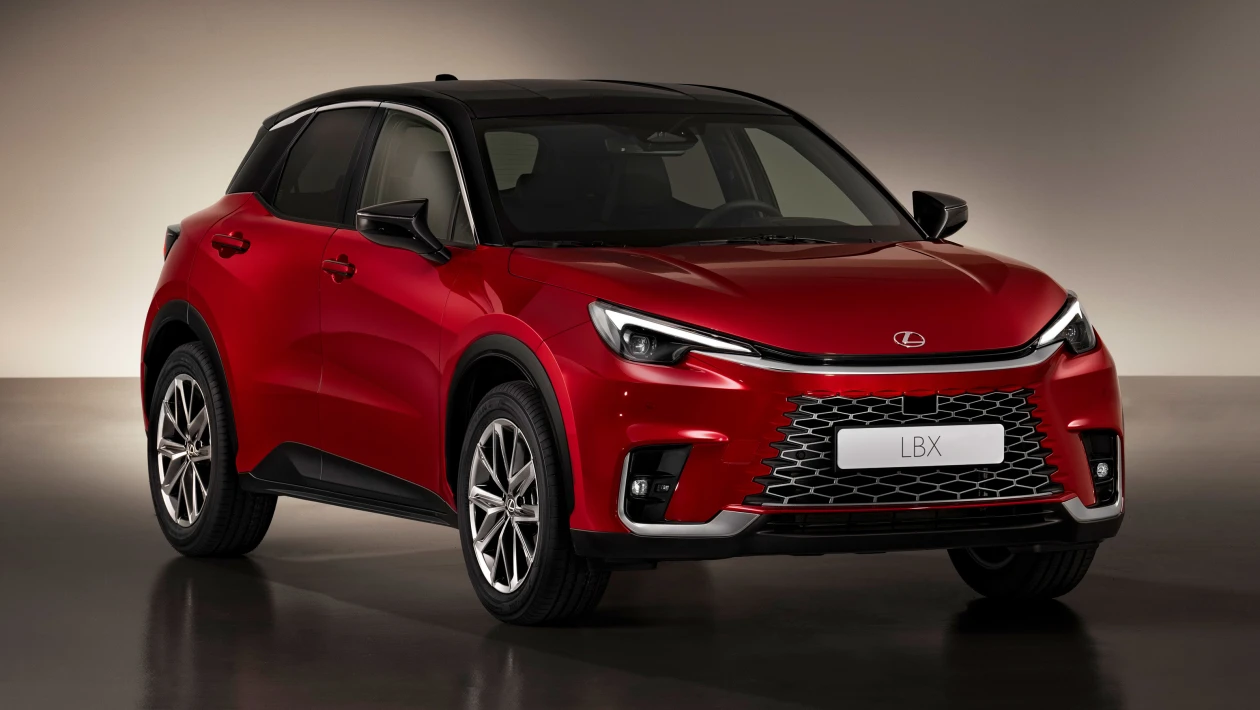Hybrid crossover shares Toyota’s TNGA-B platform with the popular Yaris Cross and offers 100kW and 185Nm.
Lexus is aiming to capture a share of the burgeoning premium crossover market with its smallest model to date, the new LBX.
The ‘Lexus Breakthrough Crossover’ rides on Toyota’s TNGA-B platform that also underpins the Yaris Cross.
The LBX’s has been confirmed for the European market of whom a “large majority” wanted a parallel-hybrid powertrain, according to Lexus Europe boss Dimitris Tripospitis, but the model is not confirmed for Australia yet.
The LBX hybrid set-up comprises a 1.5-litre three-cylinder petrol engine and a single electric motor, which combine to send up to 100kW and 185Nm through the front wheels. It draws power from a new bipolar nickel-metal-hydride battery, first used in the larger Lexus RX that launched last year.
Chief engineer Kunihiko Endo said it offers much greater power density and throughput potential than traditional lithium-ion cells, reputedly allowing the LBX to provide off-the-mark acceleration comparable with battery-electric cars.
It dispatches the 0-100km/h sprint in 9.2sec and, according to product manager Bart Eelen, provides class-leading fuel economy plus CO2 emissions “comfortably below” 120g/km. A dual-motor, all-wheel-drive variant is also inbound, said Eelen, but technical specifications are yet to be confirmed.
Imbuing the LBX with the refinement expected of a Lexus was “quite challenging”, Endo told Automotive Daily Network partner Autocar, requiring an alternative approach to the conventional fitment of sound-insulating materials.
He said: “If you want to [remove] sound by using more and more sound absorbers it also leads to higher costs, right? So we tried to eliminate the sound itself so that we don’t have to use too much in order to achieve a more silent car.
“One or two elements, as an example, would be the [engine] balance shaft, also the flex joints, were all ideas in order to reduce the sound itself.” Endo added that this was not a cost-cutting measure, but the most effective way to improve refinement.
The TNGA-B platform was also modified to ensure the LBX drives like a Lexus, with Endo referring to 1989’s seminal LS sedan as a reference.
The wheelbase was stretched by 20mm, the overhangs reduced and the track widened, meaning the crossover is 4190mm long, 1825mm wide and 1545mm high, with a 2580mm-long wheelbase.
For reference, the old CT hatchback was 165mm longer and 195mm wider, yet its wheelbase was only 20mm longer than that of the LBX.
The front suspension has also been reworked to optimise the LBX’s handling, with feedback from Toyota chairman and famously enthusiastic driver Akio Toyoda “at key points”.
Lexus International president Takashi Watanabe said: “The result is a car you can drive with confidence. On winding roads, LBX feels more like a nimble hatchback than a crossover. We aimed for a fun driving experience that makes you want to drive it forever. It is like the way you feel about your favourite pair of shoes.”
Key to this is a new system which automatically adjusts the brake balance to minimise body pitch and roll under heavy loads, such as emergency braking or tight bends.
Inside, the LBX has been designed with a focus on the driver, featuring a seating position much lower than in most crossovers. The dashboard and centre console have been simplified as much as possible, with key controls assigned to physical switches.
A 9.8-inch infotainment touchscreen with Apple Carplay and Android Auto smartphone mirroring, and a 12.3-inch digital instrument display, are standard equipment.
Lexus is yet to confirm a price for the LBX, but it is expected to compete with models in the size class above such as the Audi Q3 and Volvo XC40.
The model is planned to account for a significant portion of Lexus’s sales volume in Europe when deliveries begin in the first quarter of 2024.
Tripospitis said the brand’s regional target this year (across all models) is 70,000 sales, but it expects to shift more than 25,000 LBXs in the first year alone. He added that Lexus expects a conquest ratio of more than 50% for the LBX, which will become a “core model” in its line-up.







